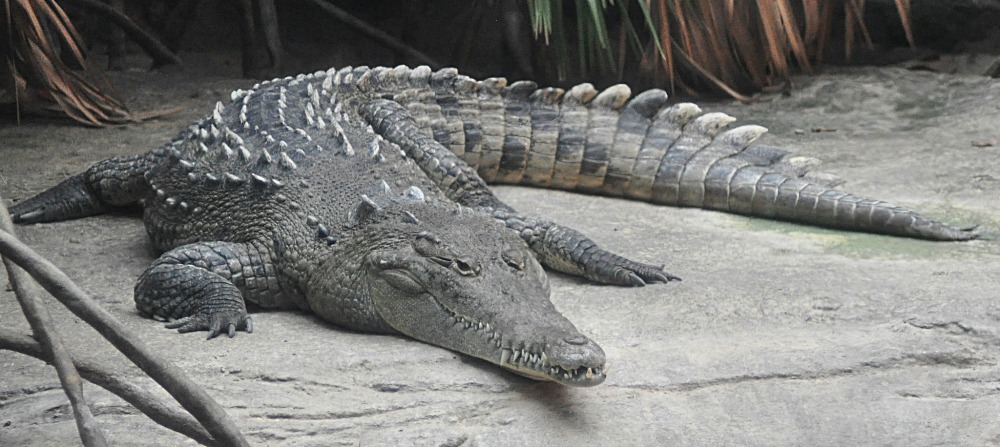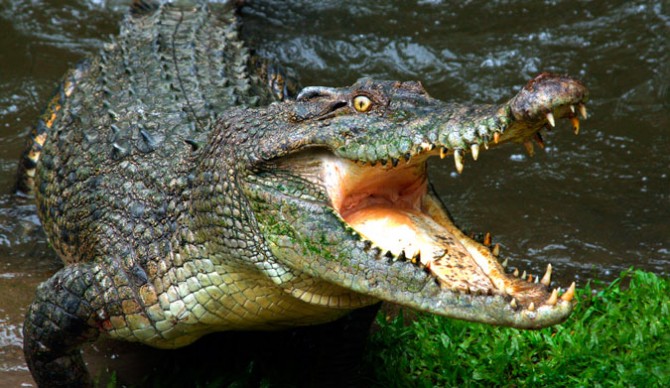
| kingdom: | Animalia |
| Phylum: | Chordata |
| Class: | Reptilia |
| Family: | Crocodylidae |
| Scientific Name: | Crocodylus |
| Feed: | Carnivore |
Crocodiles are large aquatic reptiles that live throughout the tropics in Africa, Asia, the Americas and Australia. Crocodile size, morphology, behavior and ecology somewhat differs between species. However, all crocodiles are semiaquatic and tend to congregate in freshwater habitats such as rivers, lakes, wetlands and sometimes in brackish water and saltwater.
Crocodiles are one of the planets oldest living creatures, thought to be around 200 million years old which means that crocodiles were around in dinosaur times. All crocodiles are tropical species that, unlike alligators, are very sensitive to cold. They separated from other crocodilians during the Eocene epoch, about 55 million years ago. Many species are at the risk of extinction, some being classified as critically endangered.
Characterstics
Size
Crocodile's size ranges from 1 to 7meters.
The largest crocodile ever held in captivity is an estuarine–Siamese hybrid named Yai at the Samutprakarn Crocodile Farm and Zoo, Thailand. This animal measures 6 m in length and weighs 1,114 kg.
The longest crocodile captured alive is Lolong, which was measured at 6.17 m and weighed at 1,075 kg by a National Geographic team in Agusan del Sur Province, Philippines.
Senses
Crocodiles have very good night vision, and are mostly nocturnal hunters. Crocodiles have vertical-slit shaped pupils.
The sense of smell is also very well developed, aiding them to detect prey or animal carcasses that are either on land or in water, from far away. It is possible that crocodiles use olfaction in the egg prior to hatching.
Crocodiles can hear well as their tympanic membranes are concealed by flat flaps that may be raised or lowered by muscles
When a crocodile loses a tooth, it is quickly replaced. These reptiles can go through 8,000 teeth over a lifetime.
A crocodile’s physical traits allow it to be a successful predator. Its
external morphology is a sign of its aquatic and predatory lifestyle. Its
streamlined body enables it to swim swiftly.
Crocodiles are ambush predators, waiting for fish or land animals to come
close, then rushing out to attack.
They are one of a few predators that can observe behavior, such as patterns
when animals come to the river to drink at the same time each day.
Intersting things about Crocodiles
- Crocodiles don't sweat.
- A crocodile's jaws can apply 5,000 pounds of pressure per square inch.
- Crocodiles lay 10 to 60 eggs at a time.
- Closest relatives of crocodiles are birds and dinosaurs.
- Crocodiles don't chew their food. They tear apart flesh and swallow large chunks of meat.
- Crocodiles swallow stones to ensure faster grinding of the food in their stomach.

